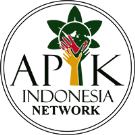INTERAKSI MASYARAKAT SEKITAR DENGAN KAWASAN CAGAR ALAM DAN CAGAR ALAM LAUT PANGANDARAN
DOI:
10.29303/jbl.v3i2.474Published:
2020-08-01Issue:
Vol. 3 No. 2 (2020)Keywords:
perception, dependence, community of forest, protected areaArticles
Downloads
How to Cite
Downloads
Metrics
Abstract
Communities and conservation areas are two things that cannot be Separated. Surrounding communities interact with conservation areas to fulfil their needs. This study aimed to know the forms of interaction between communities and the Nature Reserve and Marine Nature Reserve of Pangandaran as well as the factors that underlie these interactions. The method used in this study was a survey method with a total sample of 254 people. The target communities interviewed were communities of Pangandaran Village who carry out activities in Nature Reserve and Marine Nature Reserve of Pangandaran. The analysis used for data processing was descriptive analysis. The results showed that 44% of the community doing activities as fishermen, 17% renting out cruise ship services, 12% renting snorkeling equipment, 11% doing fishing activities, 6% as bagang fishermen and tour guides, and 4% as fishing fishermen. Factors underlying the interaction in Nature Reserve and Marine Nature Reserve of Pangandaran were community economic factors.
Â
References
Arifin, Z. (2011). Penelitian Metode dan Paradigma Baru. Bandung: Remaja Rosdakarya.
Dedi, W., Surachman, M., & Fahrizal. (2015). Analisis Pendapatan Masyarakat Dalam Pemanfaatan Hutan Tembayang Di Dusun Kurnia Kecamatan Kuala Behe Kabupaten Landak. Jurnal Hutan Lestari, 3 (1) 58-64.
Dolisca, F., McDaniel, J. M., & Teeter, L. D. (2007). Farmers’ perceptions toward forest: A case study from Haiti. Forest Policy & Economics, 9 (6) : 704-712.
Fahmi, Agus, P., & Dodi, S. (2014). Interaksi dan Pemanafaatan Hasil Hutan oleh Masyarakat Sekitar Taman Nasional Gunung Leuser. Peronema Forestry Science Journal, 4 (3).
Hamid, R., Zulkarnaini, & Saam, Z. (2011). Analisis Sosial Ekonomi Masyarakat Desa Hutan Pasca Kegiatan HPH PT. Siak Raya Timber Di Kabupaten Pelalawan, Provinsi Riau. Jurnal Ilmu Lingkungan, 2 (5).
Hangi, A., Rizalinda, & Irwan , L. (2014). Pengetahuan dan Persepsi Masyarakat Terhadap Cagar Alam Raya Pasi Kota Singkawang. Jurnal Protobion, 3 (2) : 125-134.
Hermawan, M. T., Faida, L. R., Wianti, K. F., Marhaento, H., & Anindia, A. (2014). Pengelolaan Kawasan Konservasi. Yogyakarta: Gadjah Mada University Press.
Idrus, M. (2009). Metode Penelitian Ilmu Sosial. Yogyakarta: Erlangga.
Indrawan, M., Richard, B. P., & supriatna, J. (2007). Biologi Konservasi. Jakarta: Yayasan Obor Indonesia.
Kristin, Y., Rommy , Q., & Hari, K. (2018). Interaksi Masyarakat Sekitar Hutan Terhadap Pemanfaatan Lahan Taman Hutan Raya Wan Abdul Rachman. Jurnal Sylva Lestari, 6 (3): 1-8.
Neil, A., Golar, & Hamzari. (2016). Analisis Ketergantungan Mastarakat Terhadap Hasil Hutan Bukan Kayu Pada Taman Nasional Lore Lindu (Studi Kasus Desa Sidodo I Kecamatan Biromaru dan Desa Pakuli Kecamatan Gumbusa). e-Jurnal Mitra Sains, 4 (1): 29-39.
Nurrochmat, D. R. (2005). Strategi Pengelolaan Hutan, Upaya Menyelamatkan Rimba yang Tersisa. Yogyakarta: Pustaka Pelajar.
Sawitri. (2013). Persepsi Masyarakat Terhadap Restorasi Zona Rehabilitasi di Taman Nasional Gunung Gede Pangrango. Indonesian Forest Rehabilitation Journal, 1 (1) : 92.
Situmorang, Y. K. (2014). Pemanfaatan Cagar Alam Pulau Sempu Kabupaten Malang Ditinjau dari Pasal 33 Peraturan Pemerintah No.28 Tahun 2011 Tentang Pengelolaan Suaka Alam dan Pelestarian Alam. Malang: Universitas Brawijaya .
Sugiyono. (2015). Metode Penelitian Kuantitatif, Kualitatif, dan R&D. Bandung: Alvabeta.
Undang-Undang No. 5 Tahun 1990. Konservasi Sumberdaya Alam Hayati dan EKosistemnya. Jakarta: Sekretariat Negara.
Wijaksono, S. (2013). Pengaruh Lama Tinggal Terhadap Tingkat Partisipasi Masyarakat Dalam Pengelolaan Lingkungan Permukiman. Jurnal ComTech, 24-32.
Author Biographies
Denni Susanto, Prodi Pengelolaan Hutan, Sekolah Vokasi, Universitas Gadjah Mada
Lies Rahayu Wijayanti Faida, Fakultas Kehutanan, Universitas Gadjah Mada
Fahina Risqi Hidayana Lubis, Fakultas Kehutanan, Universitas Gadjah Mada
Rizka Hanisaputra, Hanisaputra
License
The Authors submitting a manuscript has understood that if accepted for publication on Jurnal Belantara, the copyright of the article shall be assigned to Jurnal Belantara of the Forest Study Program University of Mataram as the publisher of the journal. Copyright encompasses rights to reproduce and deliver the article in all forms and media, including reprints, photographs, microfilms, and any other similar reproductions, as well as translations.
Jurnal Belantara of the Forest Study Program University of Mataram and the Editors make every effort to ensure that no wrong or misleading data, opinions, or statements be published in the journal. In any way, the contents of the articles and advertisements published in Jurnal Belantara are the sole responsibility of their respective authors and advertisers.
We strongly encourage that manuscripts be submitted to the online journal system in http://belantara.unram.ac.id/index.php/JBL/index. Authors are required to create an account and submit the manuscripts online. For submission inquiries, please follow the submission instructions on the website. If the author has any problems with the online submission, please contact Editorial Office at the following email: [email protected]
Contributors are responsible for obtaining permission to reproduce any materials, including photographs and illustrations, for which they do not hold the copyright and for ensuring that the appropriate acknowledgments are included in the manuscript.
Users of this website will be licensed to use materials from this website following the Creative Commons Attribution 4.0 International License. No fees charged. Please use the materials accordingly.











